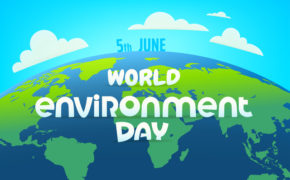Utilizing scraps for in-house paper clips

Table of Contents
Hello, this is Koga from Tokyo Shiki. In recent years, there has been increasing attention on environmentally friendly products and manufacturing methods under the keyword of SDGs.
Our company is no exception to this trend, and we have developed several proposed products to replace plastic with paper. From paper files and paper clips to paper hangers and ringless calendars, we not only accept orders and produce these items for customers, but also actively strive to use them internally.
The translation would be: “Utilizing the end materials that come out in processing”
The translation would be: “For example, when cutting out the desired shape from paper with a paper clip, there are times when inevitably some odd sizes are left over. These are called ‘end materials’.”

The translation would be: “It’s okay to throw them away, but that would be such a waste. I wondered if they could be used for something… So, I ended up accumulating the end materials.”
The translation would be: “End materials don’t come out as intended, so they can’t be used for customer orders. However, if they’re small, perhaps some shapes can be made from them? With that in mind, we decided to cut out paper clips for use within the company.”
The translation would be: “Paper clips made from end materials”

The translation would be: “Since they are cut out from the end materials available at that time, the color, quantity, and thickness vary, but it’s not a problem for in-house use. They are placed in a box on the shelf in the office, and anyone who wants them can take and use them as they like.”
The translation would be: “Prioritizing ease of use.”
The translation would be: “Previously, we had more design-oriented and visually appealing novelty paper clips for office use, but after receiving feedback like ‘smaller ones would be better’ and ‘prioritize ease of clipping,’ we decided to opt for shapes that emphasize usability.”

The translation would be: “For products and novelties as designer stationery, intricate cuts and visually striking designs are preferable, but for office supplies, a simple shape like this is better. We also chose a size of about 20×25mm, a waste-free size that can be obtained even from small end materials.”
The translation would be: “An environmentally friendly way of thinking”
The translation would be: “This is just my personal opinion, but I feel it’s somewhat counterproductive if a product is promoted as ‘made from materials that are more environmentally friendly than plastic,’ yet its production involves a lot of waste and actually results in a significant amount of trash.”
The translation would be: “To truly promote a product as eco-friendly, everyone involved should be conscious and consider whether there are any wasteful aspects or processes harmful to the environment, and improve upon these areas where possible.”
The translation would be: “Though I say all this, there’s a real dilemma because, honestly, clear files make specifications easier to read than paper files, thick stacks of paper are hard to clip together with paper clips, and since it might rain during transport, I want to deliver the paper wrapped in OPP bags…!”
The translation would be: “Living with an environment-first mindset for everything can become suffocating, so I am constantly thinking about making some reasonable proposals. I would be grateful if you could watch over me with a kind eye.”




